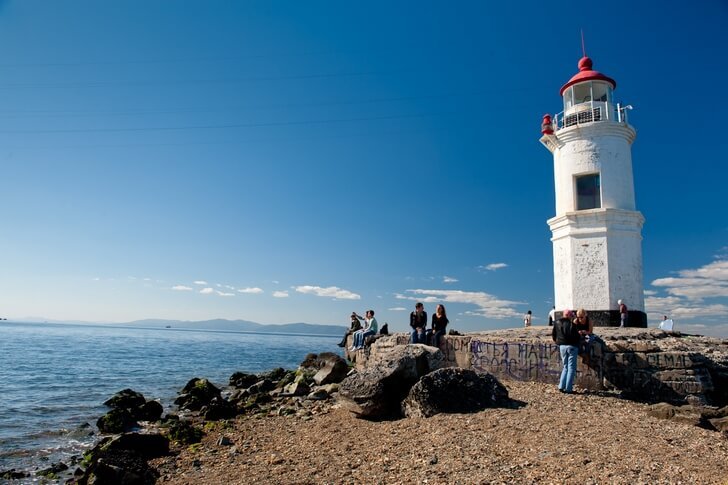For most residents of Russia, Primorsky Krai is almost as exotic as Korea or China. Due to the vast distances, Vladivostok seems so far away that it is easier to get to another country than to travel these thousands of kilometers. The capital of Primorye is not quite a typical Russian city. This is the territory of the grandiose Pacific Ocean, incredibly beautiful bays, bridges, ships and fresh seafood.
In the city you can visit a real Chinese or Korean restaurant, and not its imitation, as is usually the case, admire the bizarre forms of the Golden Horn from the observation platforms, wander through the hills of Russky Island, go to a modern aquarium or prefer all this to a fascinating boat trip. Whatever the tourist does, he is provided with an unforgettable experience.
What to see and where to go in Vladivostok?
The most interesting and beautiful places for walking. Photos and a short description.
- Cable-stayed bridges
- Russian Island
- Golden Horn Bay
- Sopka Eagle's Nest
- Embankment of the Tsesarevich
- Fighters for the power of the Soviets in the Far East
- Nicholas Triumphal Gates
- Train Station
- Vladivostok GUM
- Vladivostok funicular
- Voroshilov Battery
- Vladivostok fortress
- Intercession Cathedral
- St. Paul's Lutheran Church
- Catholic Church of the Holy Mother of God
- Primorsky Oceanarium
- Vladivostok Oceanarium Aquamir
- Botanical Garden-Institute FEB RAS
- Seaside Museum named after V. K. Arseniev
- Military History Museum of the Pacific Fleet
- Museum of Automotive Antiques
- House-museum of official Sukhanov
- Seaside State Art Gallery
- Gorky Drama Theater
- Primorsky Stage of the Mariinsky Theater
- Submarine S-56
- Red Pennant
- Frigates Pallada and Nadezhda
- Lighthouse on Skrypleva Island
- Lighthouse Egersheld
Cable-stayed bridges
Two cable-stayed bridges of Vladivostok (Golden and Russian) are a real decoration of the city, structures hovering over the rugged bay, which give it a unique and recognizable appearance. They claim to be a symbol of the Primorsky Territory and an architectural masterpiece of the 21st century. The length of the Golden Bridge is about 1.4 km, the length of the Russian Bridge is 1.1 km. The construction of the pontoons was carried out in the period 2008-2012 in preparation for the APEC summit.
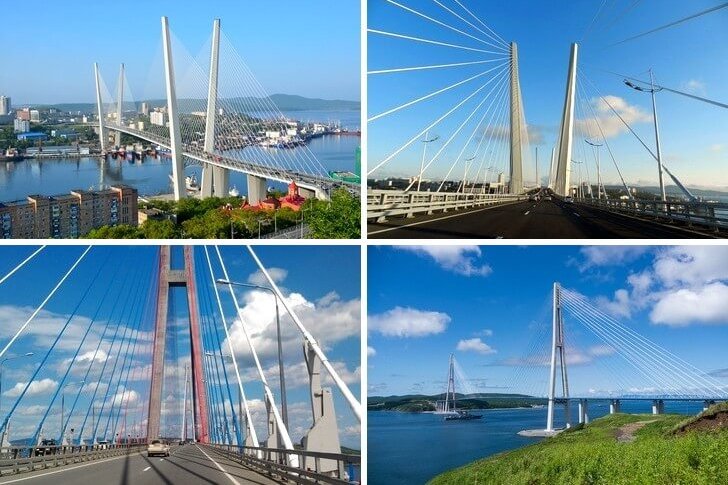
Russian Island
The island is located in Peter the Great Bay, a few kilometers from Vladivostok, being part of the city district. It has a rugged coastline that hides small bays and is covered in fells. Russky has a promenade, a dolphinarium and an oceanarium, but still its main value is nature, stunning views of rocky shores and a powerful ocean. In summer this place is great for swimming.
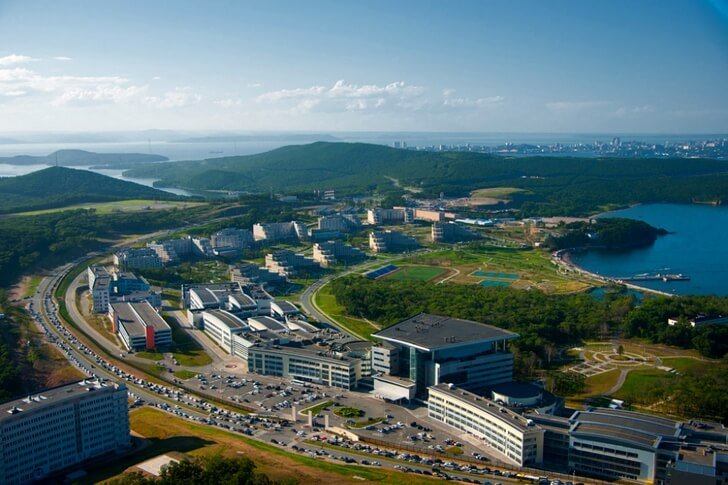
Golden Horn Bay
A long and rather narrow bay, on both sides of which there are city blocks and seaports. The Golden Bridge is thrown over it. This is a fairly busy place, as ships are constantly mooring to the shores (sometimes even submarines are shown!) And ship repair enterprises are constantly making noise. At night, the bay is a grandiose sight, shining with thousands of lights.

Sopka Eagle's Nest
A hill about 200 meters high, the highest point of Vladivostok. At its top is a television tower, and around are residential areas. Part of the territory of the hill is covered with forest. Of the sights, you should pay attention to the monument to Cyril and Methodius and the observation deck located around, from where you can admire the panorama of Vladivostok and the Golden Horn Bay.
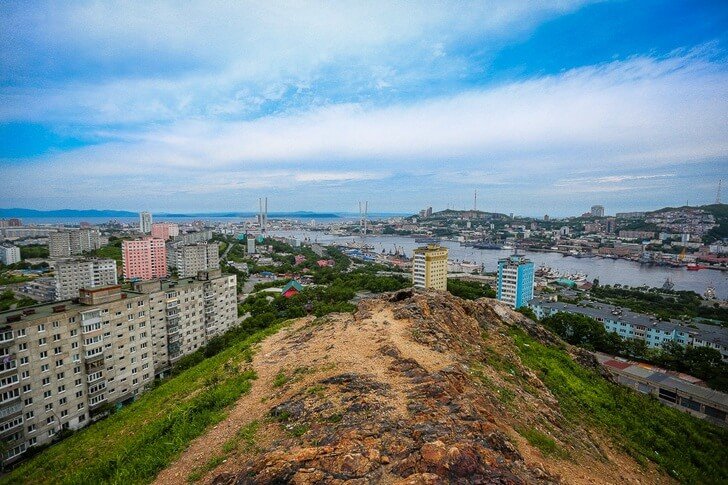
Embankment of the Tsesarevich
The embankment is located on the edge of the Golden Horn, it was built in 2012 on the anniversary of JSC Holding Company Dalzavod, a ship repair company, the opening of which was attended by Emperor Nicholas II, who at that time was Tsarevich. The length of the alley is 600 meters, there are walking and park areas, several cafes and a playground. Boats depart from here for short excursions around the bay.
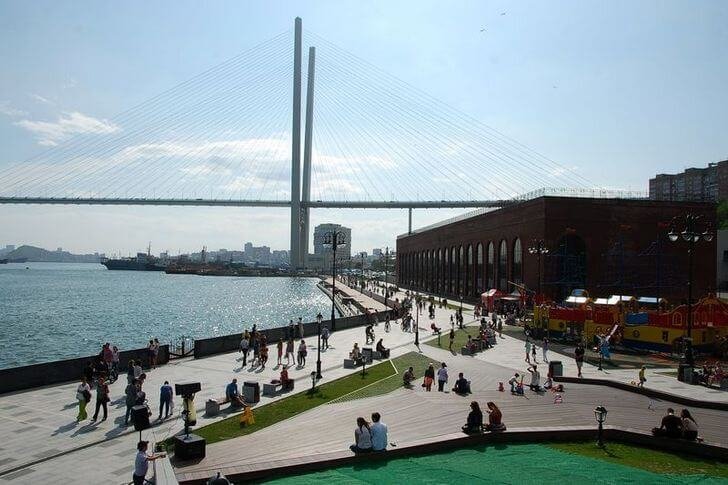
"Fighters for the power of the Soviets in the Far East"
Monument of 1961, which is a 30-meter figure of a member of the People's Revolutionary Army of the Far Eastern Republic, who fought for the establishment of Soviet power in the region. The statue stands on a high pedestal, on both sides of which there are two sculptural groups: the first is dedicated to the overthrow of the power of the tsar, the second - to the liberation of Vladivostok from the Japanese invaders.

Nicholas Triumphal Gates
Initially, the gate was erected in 1891 in honor of the visit to the city of the future Emperor Nicholas II. The Tsarevich came to Vladivostok as part of a round-the-world trip. The structure is an elegant and elegant arch made of brick and stone, made in the Russian-Byzantine style. In the upper part is the image of the patron saint of sailors Nicholas the Wonderworker. The original gate was blown up in 1930 as a symbol of autocracy. The current building was built in 2003.

Train Station
The passenger station is the end point of the Trans-Siberian Railway. The complex of buildings of the station was erected at the end of the 19th century according to the project of P. E. Bazilevsky in the neo-Russian style. During the 20th century, the building was rebuilt several times, depriving it of imperial features and adding more of the Soviet style: coats of arms were removed, folklore scenes were painted over, and the color of the facade was changed. After the restoration of the 1990s, the complex approached its pre-revolutionary appearance.
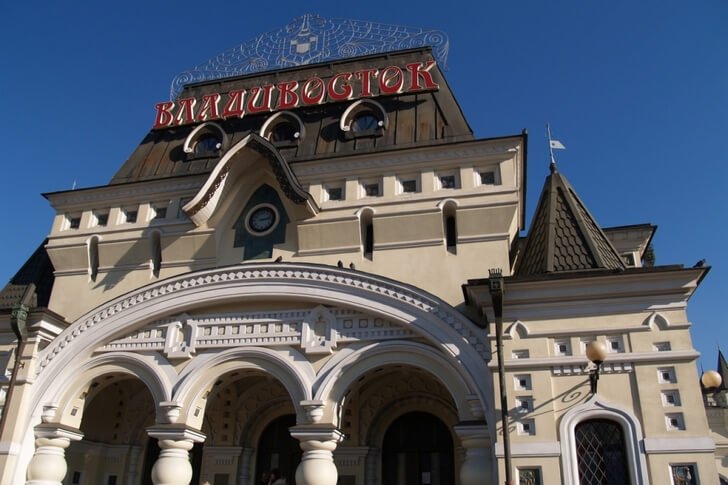
Vladivostok GUM
The oldest store in the Far East, which began with the trading house "Kunst and Albers", founded in 1864. This company at the beginning of the 20th century was the largest in the region and worked until the 1930s. The historic building was erected according to the project of G. G. Jungkhendel. It is decorated with bas-reliefs, replete with decor and elements typical of the German Baroque, which makes it a valuable architectural monument.
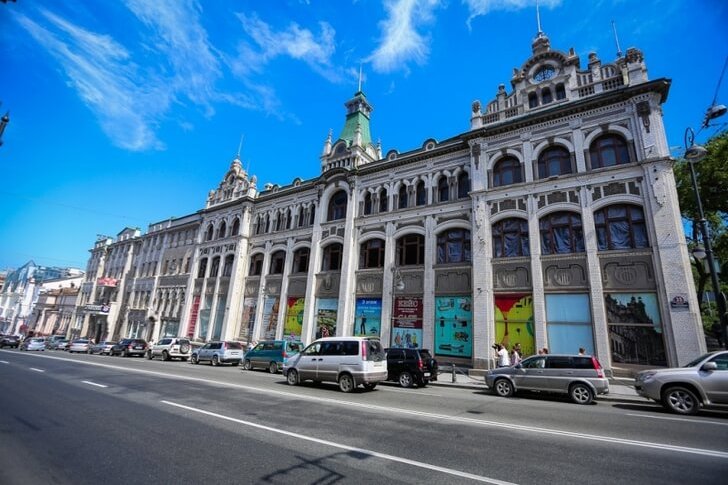
Vladivostok funicular
Lift system in operation since 1962. The lower station is located on the street. Pushkinskaya, upper - on the street. Sukhanov. The main passengers are tourists and FEFU students (the university buildings are located close to stopping points). The rails run two tram-type cars with a capacity of up to 40 passengers. Before the advent of the lift system, the way up could be overcome by a rather steep staircase.
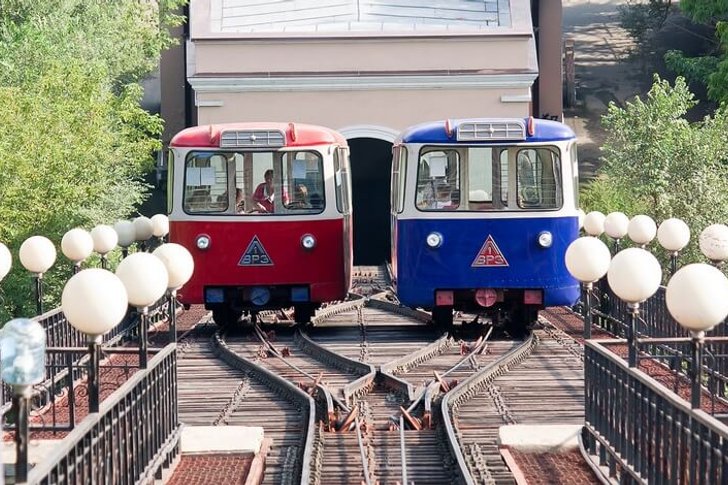
Voroshilov Battery
A unique defensive structure, the analogue of which is only in Sevastopol. It was built in 1931. The design consists of two towers with guns (there were an ammunition depot, technical and living quarters under them) and an underground corridor connecting them. In 1997, the battery ceased to exist as a combat unit, and a museum exposition was opened on its territory.
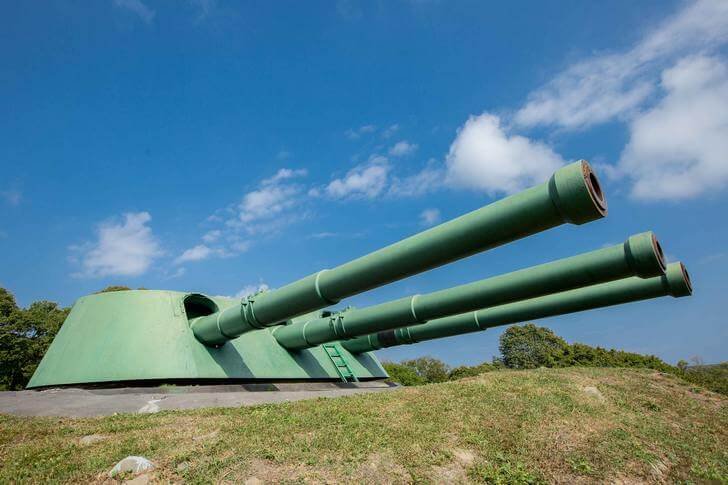
Vladivostok fortress
A complex of defensive structures of the 19th - early 20th centuries, which is considered one of the most fortified and powerful coastal fortresses. Interestingly, its construction was never completed due to the First World War and the October Revolution that followed. During the construction of the complex, Russian engineers took into account the experience of the Russo-Japanese War, the terrain and future tasks, which made the fortress almost impregnable.
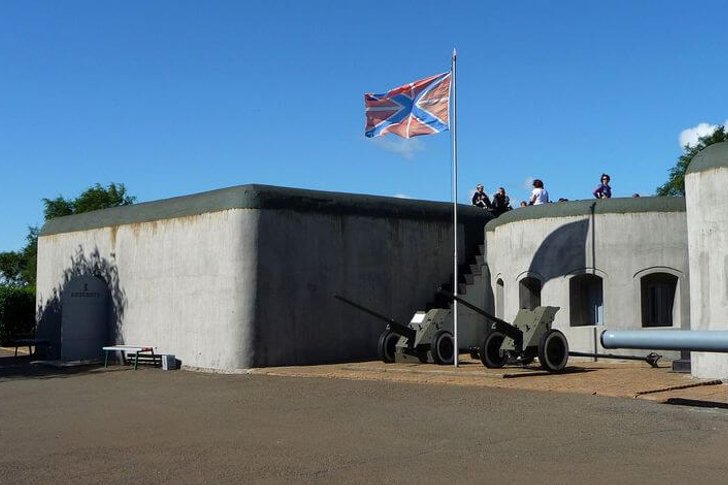
Intercession Cathedral
The main temple of Vladivostok, built at the beginning of the 20th century and destroyed in 1935. Nearby was a cemetery with the graves of participants in the Tsushima battle. In Soviet times, a park was located in its place. The parish began to revive in the 1990s, the new cathedral was built only in 2007. The modern building is placed on the old foundation and is almost a complete copy of the historical one.

St. Paul's Lutheran Church
Protestant church of the early 20th century, the oldest religious building in Vladivostok. It was erected according to the project of G. G. Junghendel in the style of northern German Gothic. After the revolution, it housed a cinema and a club, later - the Museum of the Pacific Fleet. In 1997, the building was returned to believers in the presence of the German ambassador. The restoration lasted 12 years at the expense of the Lutheran communities in Germany and other countries.

Catholic Church of the Holy Mother of God
For a long time, the Catholic church in Vladivostok was considered the largest in the Asian part of the Russian Federation. The main stage of construction was completed in 1921. In 1935 it was closed and the priests were shot. Until 1991, the State Archive of Primorsky Krai was located inside, although already in 1987 the building was declared an architectural monument. In 2010, the reconstruction of the structure was completed, as a result of which towers and bells appeared.
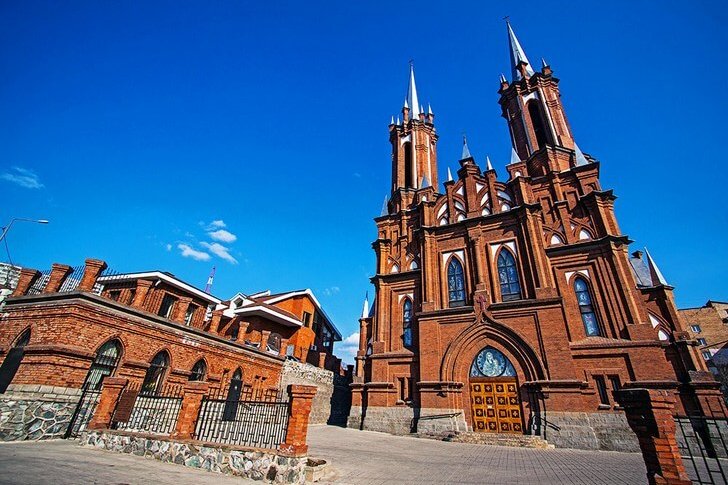
Primorsky Oceanarium
The oceanarium is located on Russky Island. Aquariums are housed in a picturesque building of modern architecture, reminiscent of ocean waves and shells. The complex includes a park zone, scientific laboratories, an adaptation building, a main reservoir and engineering structures. The oceanarium opened in September 2016 in the presence of President Vladimir Putin.

Vladivostok Oceanarium "Aquamir"
Aquamir is the first oceanarium in Vladivostok, opened in 1991. In two halls with a total area of 1.5 thousand m² there are aquariums with fish, corals, sponges and other inhabitants of the depths. Also represented are residents of fresh water bodies of the Far East, the Sea of Japan and the Sea of Okhotsk, and tropical regions. In total, there are about 120 species (2 thousand individuals). At the oceanarium there is a maritime museum.

Botanical Garden-Institute FEB RAS
The largest garden in the Far East, with a rich collection of plants. It has an important cultural and natural significance, therefore it is a protected area. The first botanical garden appeared in the city at the end of the 19th century, but it did not last long, the modern one was founded in 1949. Hiking trails leading to the protected massifs of the Ussuri taiga are laid across the territory.

Seaside Museum named after V. K. Arseniev
Museum of local lore with the most extensive exposition in Primorsky Krai. Here are collected natural, archaeological and ethnographic collections, as well as materials about the explorers of the region. The date of foundation is considered to be 1884, although it was opened for visiting only in 1890. Today the exhibition is located in the building of the former profitable house of the industrialist V.P. Babintsev.

Military History Museum of the Pacific Fleet
The museum opened in 1950. The first exhibits were items brought from expeditions to Kamchatka and the Kuril Islands. Since then, the collection has grown so much that it will take several hours to examine it. The exhibition is divided into two parts: the classical exposition inside the building and the military equipment placed in the open air. Of the interesting specimens - a Japanese mini-tank and a submarine.
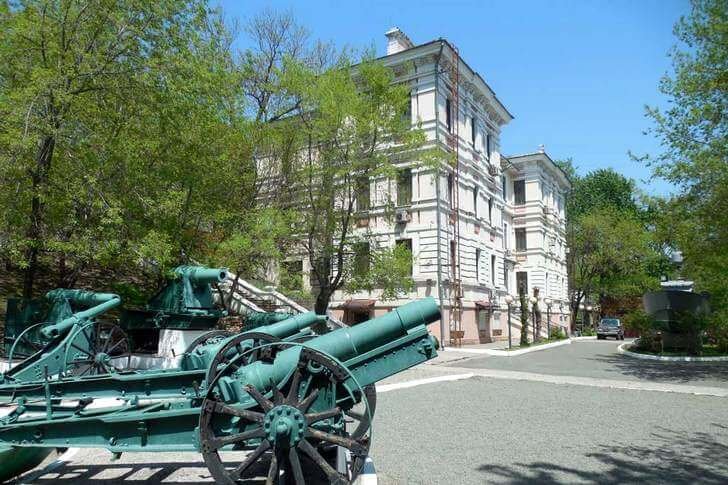
Museum of Automotive Antiques
The exposition consists of rare motorcycles and cars produced in different countries. In total, the museum has several dozen copies placed in six halls. Among them are Japanese and German models obtained as trophies, Soviet equipment, cars of the middle of the 20th century. An additional entourage is created by old photographs of Vladivostok hung on the walls and posters from the times of the USSR.

House-museum of official Sukhanov
Memorial Museum of the family of A. V. Sukhanov - State Councilor of Tsarist Russia. It is located on the territory of a wooden mansion of the XIX century - one of the few buildings of this type that have survived to this day. The exposition was created in 1977 on the initiative of the city residents. A. V. Sukhanov became famous for doing a lot for the improvement of the Primorsky Territory and Vladivostok itself.
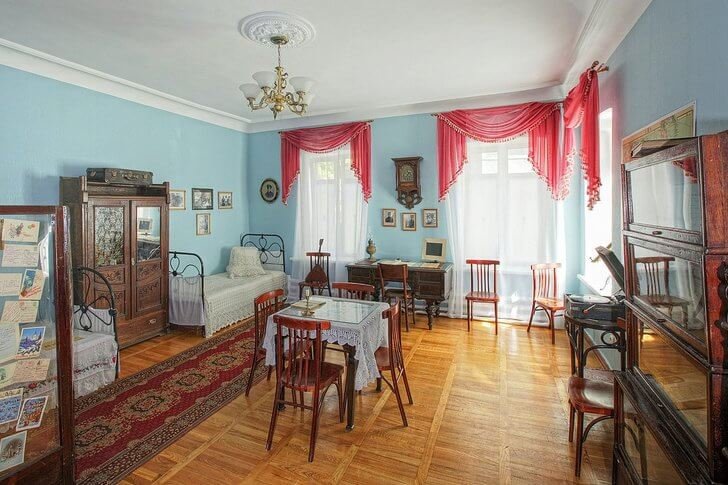
Seaside State Art Gallery
Art Museum, founded in 1965 on the basis of the funds of the Hermitage, the Tretyakov Gallery and the Russian Museum. A large part of the collection was transferred from the Primorsky Museum named after V. K. Arseniev. The collection is housed in the former building of the Russian-Asian Bank, which operated in Vladivostok at the beginning of the 20th century. In the near future, the exhibition "Hermitage-Vladivostok" is planned to be opened on the basis of the gallery.

Gorky Drama Theater
The oldest theater in Vladivostok was founded in the 1930s. In 1975, the stage moved to a modern building, which was renovated in 2006. Performances are held in the large hall, designed for 868 seats, and in the chamber hall for 50 seats. The troupe takes part in Russian and international festivals, goes on tour to other cities and regularly pleases the audience with new premieres.
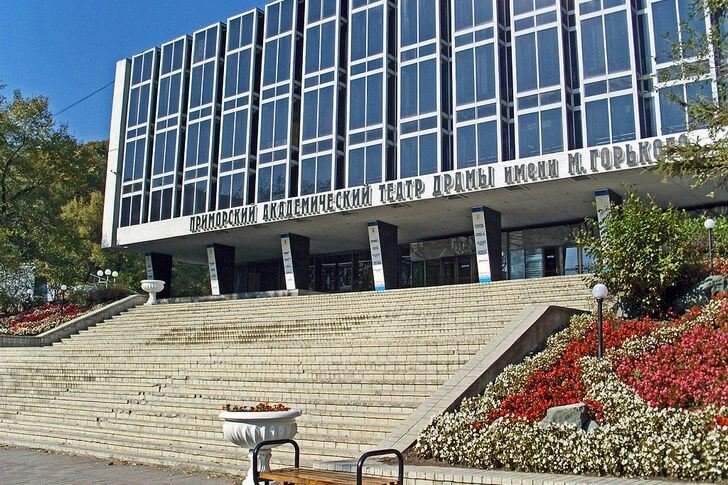
Primorsky Stage of the Mariinsky Theater
A branch of the famous Mariinsky Theater was formed on the basis of the city Opera and Ballet Theater in 2016. This event was preceded by reconstruction and technical equipment with the most modern equipment. Considering the fact that the building was erected in 2013, there was no need to make much effort. The theater has two halls: a large hall for 1356 seats and a small hall for 305 seats, designed for chamber productions.

Submarine S-56
S-56 was built in 1939 at one of the Leningrad shipyards. By rail, its parts were delivered to Vladivostok and then assembled. In 1941, the ship was included in the combat strength of the Pacific Fleet, in 1943 it was transferred to the Northern Fleet. The boat made eight military campaigns and sank several ships. In 1982, it became part of the memorial complex.
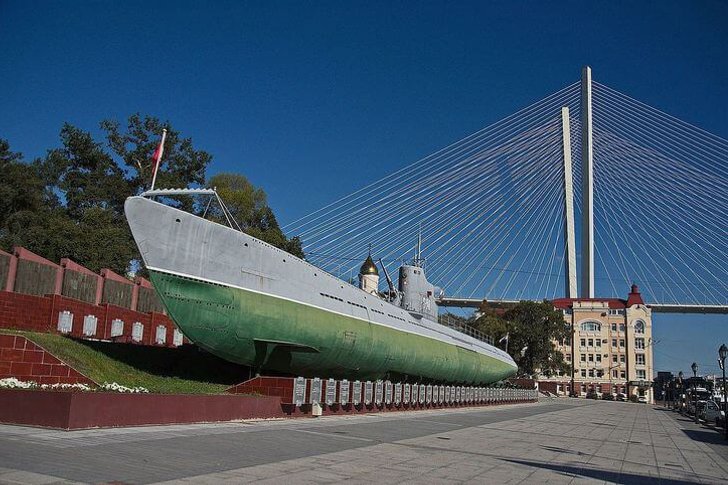
"Red Pennant"
Pre-revolutionary ship, created in 1910 in St. Petersburg. Initially, it was used as a passenger ship, but during the First World War it was adapted for military purposes. "Red Pennant" participated in the battles during the Civil War, and also performed certain work during the Second World War. Since 1958, he stopped sailing and was reborn as a museum ship.

Frigates "Pallada" and "Nadezhda"
Sailing ships built in Polish shipyards in 1989, which are now used for the training of future sailors. "Pallada" made two trips around the world, "Nadezhda" regularly goes on research expeditions throughout the Pacific Ocean. During maritime parades, sailboats are used to enhance the aesthetic effect - their passage through the bay causes a storm of emotions among observers.
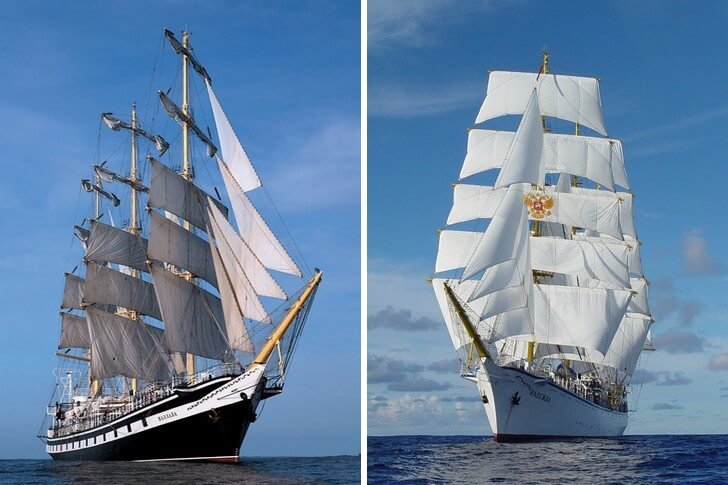
Lighthouse on Skrypleva Island
The lighthouse was built at the end of the 19th century, when heavy traffic began in the port of Vladivostok. The ships needed a guide when entering the Eastern Bosphorus. The signal stone tower was installed at a height of 52 meters above sea level, in 1900 it was equipped with a sound siren. The lighthouse continues to operate today. Moreover, the light of its lights is the most powerful in Vladivostok.
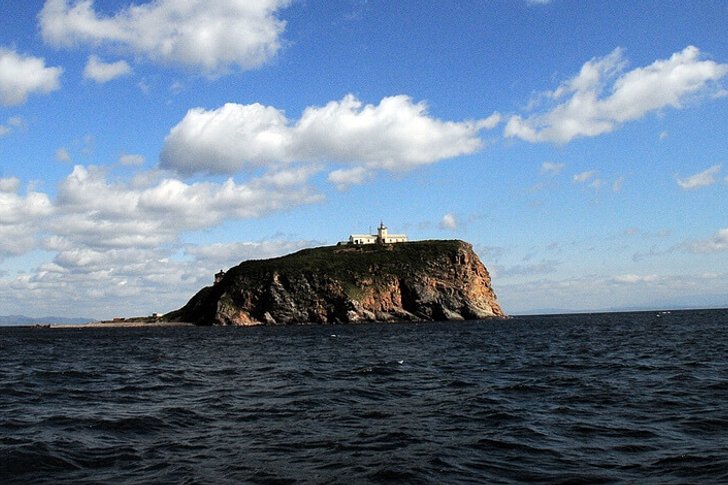
Lighthouse Egersheld
One of the oldest lighthouses in the Far East, built in 1876. Today, it not only continues to carry out its service regularly, being a landmark for ships entering from the Amur Bay, but is also considered a city landmark. The building stands on a small stone spit - Tokarevskaya cat, which is located on the edge of the cape of the same name.
